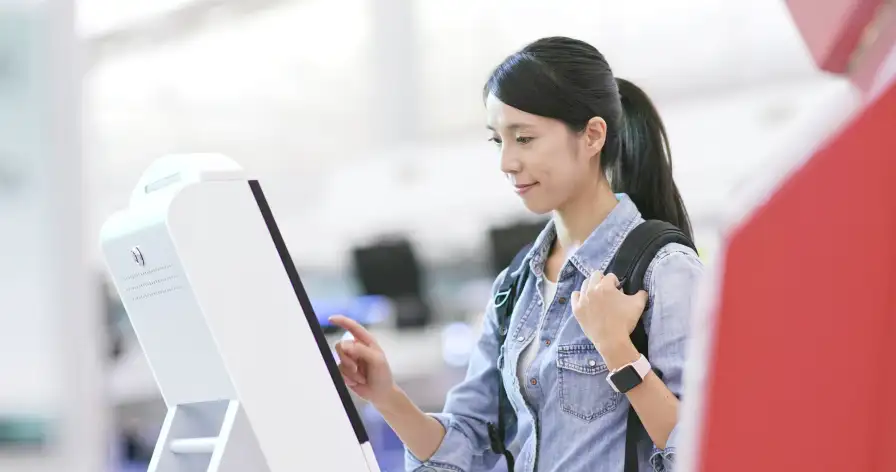The strategic AI-native platform for customer experience management
The strategic AI-native platform for customer experience management. Unify your customer-facing functions — from marketing and sales to customer experience and service — on a customizable, scalable, and fully extensible AI-native platform.

Working together for the Greater (customer) Good: AI, Humans, and the Humans we call Customers
In the ever-evolving customer support landscape, the dichotomy of AI versus human assistance is no longer the prevailing narrative. Instead, envision a harmonious collaboration where technology and human-touch unite to serve the ultimate protagonist: the customer. In this article, CX thought leader Micah Solomon helps you understand this new future of customer service with his triangular model of tech-enabled and human-powered customer service.
AI and human beings are not necessarily an “either/or” proposition in the modern customer support landscape. Far from it.
To help you visualize how these forces work together to serve the third and most important element in the customer experience (that would be the customer, of course!), here’s a model I find extremely helpful: the triangular model of tech-enabled and human-powered customer service. This triangle helps to visualize the multiple ways customers and employees may interact with — and benefit from — AI and similar high technology, as well as interacting, at times, directly with one another.

The Three Vertices in the Technology–Customer–Employee Triangle
Vertex 1: The agent, or other human service provider.
Vertex 2: The customer or prospect.
Vertex 3: Artificial intelligence or other high technology.
In the triangular model, the information exchange at the heart of customer service can come:
• Via self-service, with AI or another high-tech tool serving the customer directly without any involvement from customer service professionals. This initial customer engagement with intelligent technology can sometimes answer a customer’s questions entirely right off the bat.
In this case, only two vertices of the triangle are engaged: the customer and the technology they’re using. Not only that but the actions that the customer is trying to achieve can sometimes be triggered without any human involvement. For example, AI-powered technology can generate a return authorization or even issue a refund to resolve a minor issue—say, $5 for being a day late in delivery.

• From a human employee who, in turn, is likely aided behind the scenes by AI and similar technology. (Here, all three vertices — customer, employee, and technology — are engaged, but the third vertex, technology, is invisible to the customer.)
• From a combination of these two forms of support, with the customer switching from one to the other as they see fit. The customer can start with self-service, such as an AI-powered search bar on the company website (which, by the way, is a solution that is superior to the traditional, always out-of-date FAQ approach), then switch to working with a human employee if needed, when the time comes. In other words, if the self-service tools are no longer giving your customer or prospect what they’re looking for, a human agent can then
intervene—either at the request of your customer (clicking on a “Click here for . . .”) or at the discretion of the company.

Note that, per the interactional nature of our triangle, even after the customer begins interacting directly with a human, advanced technology will still likely help:
On the agent side, it may prompt the employee with pop-up messages on-screen that offer context-based suggestions for best serving the customer. These in-the-moment prompts can be so powerful that they allow generalist employees to handle specialized inquiries and challenges that they wouldn’t have been able to before.
On the customer side, there’s no reason to assume that your customers will stop using technology on their own the moment they’re interacting with a human employee. Instead, most will continue poking around on the company website or searching for an answer via the world’s largest receptacle of anticipatory results, Google.
A Case Study: Sweetwater Sound
Consider the success this triangular model brings to Sweetwater Sound, a billion-dollar musical instrument dealer offering everything from electric guitars and keyboards to brass instruments, woodwinds, and drums that power both school and armed services marching bands.
Sweetwater serves musicians remotely from its 100-acre, 320,000-square-foot Fort Wayne, Indiana facility. Sweetwater is serious about making sure that its product choices are selected and arranged sensibly to make sure a customer can find what they’re looking for without delay or detour. To accomplish this, Sweetwater makes use of deep staff knowledge (they have an employee base that’s nearly 95 percent musicians, recording studio owners, video professionals, and similar) while bolstering that staff knowledge with the latest in anticipatory AI and algorithmically driven technology.
The power of this marriage between informed humans and advanced technology can be illustrated with a Sweetwater app-based or website search. A customer—in this case, let’s assume a keyboard player — might use the Sweetwater website search field to look for “sustain pedals,” the pedal that sustains a note or chord on a keyboard after it’s played.
Although AI informs this search bar and does its best to winnow out invalid results, a customer who performs this search is confronted with, as I count them, more than 80 options. Some are relevant, some not, and some fall in a grey area. At this point, a human being — a fellow keyboard player, ideally, on Sweetwater’s staff—becomes the best choice to help sift through the daunting inventory result for the pedal that would best suit the customer’s specific keyboard setup.
But even at this point, it’s a mistake to think the human agent is working independently without them being assisted by AI. Far from it. As an exemplar of the triangular model that is so powerful, they have internal AI support that allows them to consider issues they might not have surfaced working alone without AI support and to provide a much more nuanced and personalized solution than they would have been able to put together on their own.
Summary
In closing, the evolving landscape of customer support is no longer a battleground of AI versus human assistance but a stage where their collaboration takes center stage. The triangular model outlined here paints a picture of a future where technology and the human touch unite to serve the ultimate protagonist: the customer. By embracing this harmonious collaboration, companies can deliver exceptional customer experiences that seamlessly integrate advanced technology and the human touch. This approach is not just a glimpse into the future but a practical path to elevating customer service to new levels of satisfaction and efficiency, ultimately setting businesses apart in today's competitive landscape.









